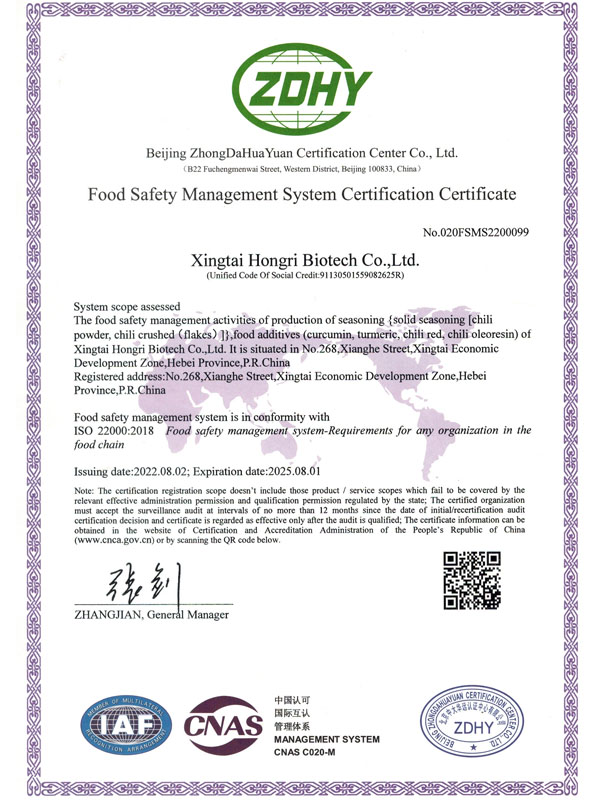- No. 268 Xianghe Street, Economic Development Zone of Xingtai city, Hebei 054001 China
- Byron@hbhongri.cn
Comparison of Oleoresin Capsicum and Pepper Spray for Self-Defense Applications
Understanding Oleoresin Capsicum vs. Pepper Spray A Detailed Comparison
In the realm of self-defense tools, pepper spray is widely recognized for its effectiveness, ease of use, and portability. However, a lesser-known term often associated with it is oleoresin capsicum (OC). While many people use these terms interchangeably, understanding the difference between oleoresin capsicum and pepper spray can enhance our knowledge of self-defense options and their applications.
Oleoresin capsicum is a natural extract derived from chili peppers, specifically from the Capsicum family. This extract contains the active ingredient capsaicin, which is responsible for the pungent heat associated with peppers. The concentration of capsaicin in oleoresin capsicum can vary significantly, typically ranging from 1% to 20% or more. The higher the concentration of capsaicin, the more potent the oleoresin capsicum becomes.
Understanding Oleoresin Capsicum vs
. Pepper Spray A Detailed ComparisonOne of the primary purposes of oleoresin capsicum is its application in various industries, including food, pharmaceuticals, and cosmetics. In culinary circles, it is prized for its ability to add flavor and heat to dishes, while in the medical world, it is often used as a topical treatment for conditions like arthritis and muscle pain due to its analgesic properties. However, when oleoresin capsicum is diluted and aerosolized, it transforms into pepper spray, specifically formulated for self-defense.
oleoresin capsicum vs pepper spray

Understanding their differences extends beyond mere composition. The deployment mechanisms also vary. Oleoresin capsicum in its raw form can be difficult to handle and apply directly, as it is highly concentrated. In contrast, pepper spray is designed for user-friendly operation, often featuring a nozzle or spray mechanism that allows for quick deployment in urgent situations. Most pepper sprays also come with safety features to prevent accidental discharge, making them suitable for carrying in bags or on personal keychains.
In terms of effectiveness, both oleoresin capsicum and pepper spray can incapacitate a potential threat, causing temporary blindness, coughing, and disorientation. However, the formulation and delivery system of pepper spray provide an advantage in self-defense scenarios. The immediate aerosolized delivery of the capsaicin directly into the face of an assailant allows the user to maintain a safer distance, ultimately increasing their chances of escaping a dangerous situation.
Moreover, legal regulations regarding the use and possession of pepper spray vary from one jurisdiction to another. While oleoresin capsicum as an ingredient is generally not restricted, pepper spray products are often subject to specific laws that dictate their strength, size, and usage circumstances. It is crucial for individuals considering pepper spray for self-defense to familiarize themselves with local laws to ensure compliance and safe use.
In conclusion, while oleoresin capsicum is a versatile extract with various applications, it is the formulation into pepper spray that enhances its utility for self-defense. Understanding the differences between the two, including their composition, usage, and legal implications, empowers consumers to make informed choices about personal safety products. Whether one is a culinary enthusiast or someone concerned about personal safety, the knowledge of oleoresin capsicum and pepper spray remains valuable in navigating both the kitchen and the streets.
-
Turmeric Rhizome Powder: A Golden Treasure from Roots to TableNewsJul.28,2025
-
The Versatile Application Of Crushed Red Hot Peppers: Lighting Up The Red Flames On The Dining TableNewsJul.28,2025
-
The Paprika: A Touch Of Vibrant Red In Color, Flavor, And CultureNewsJul.28,2025
-
Ground Turmeric: A Modern Examination of an Ancient SpiceNewsJul.28,2025
-
Capsicum Liquid Extract: Features, Applications, and ChallengesNewsJul.28,2025
-
Application of Capsicum Liquid Extract in FoodNewsJul.28,2025







